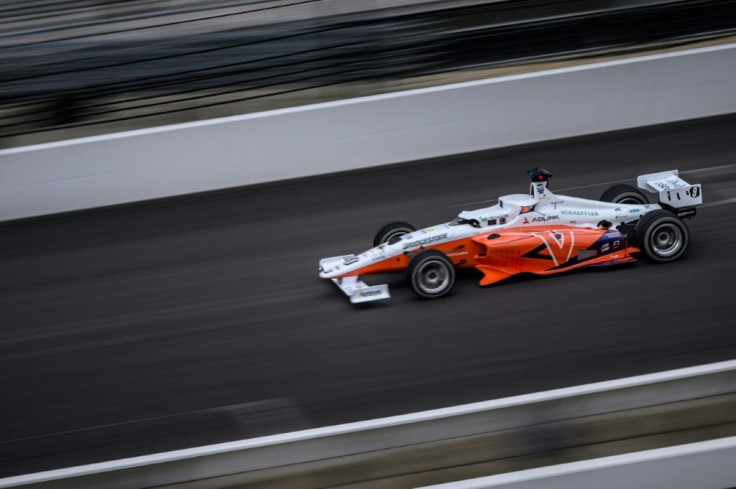Self-driving Race Cars Make History In Indianapolis
The winner was not a driver but an algorithm on Saturday at the Indianapolis Motor Speedway, where the top car clocked an average speed of 218 km/h (135 mph), ushering autonomous vehicles into a new era.
Setting the record pace over two laps, a team from the Technical University of Munich (TUM) won a $1 million prize in the first Indy Autonomous Challenge, an event dedicated to self-driving cars.
Their car beat EuroRacing, another European team who fell to a coding mistake by one of their student engineers despite securing the fastest lap time ever recorded for an autonomous car, at 139 miles per hour (223 km/h).
EuroRacing's Dallara IL-15 had been programmed to run five laps instead of the six scheduled for every competitor and therefore slowed down during its final drive around the oval, bringing down the average speed.
"I have a bitter taste in my mouth," said Marko Bertogna, professor at the University of Modena and Reggio Emilia in Italy and EuroRacing team head.
A third European team also had a shot at victory but GPS trackers for PoliMOVE shut down during the race, which made their car "totally blind", according to Sergio Matteo Savaresi, professor at the Polytechnic University of Milan and team manager.
Each autonomous car relies on sensors, cameras, radar, but above all GPS, without which no controlled motion is possible, to the point that some have two onboard.
The Dallara IL-15, used by every team, resembles a Formula One car but is smaller and comes with a price tag of $230,000. However, the technology on board makes each car worth more than $1 million, according to event organizers.
Among the tech installed in the vehicles are sensors supplied by industry trailblazer Luminar that can map out surfaces from 250 meters away.

The TUM team's average speed of 218 km/h "is not far away from what human drivers do" with the same car, said Alexander Wischnewski, a member of the winning team.
Considering the cool, wet weather in Indianapolis on Saturday, with no proper warm-up time for tires, "I'm really proud of what we showed today," Wischnewski said.
"Nobody knew that these (self-driving cars) could go so fast in competition," added Stefano dePonti, Dallara USA's CEO, who said he had witnessed "a part of history."
Bertogna said he believed the autonomous Dallara could reach 280 km/h, "but with these conditions, it was impossible."
For two years, the nine competing college student teams had been preparing for an event in which all the cars would race at the same time side by side.
But organizers had a last-minute change of heart and decided to go for a time trial competition instead, with the cars taking turns on the track.
However, a side session took place a few days earlier on another Indianapolis track, Lucas Oil Raceway, during which TUM, PoliMOVE and EuroRacing all had their Dallaras running simultaneously, and even overtaking each other.
Talk is now rife about a proper multi-car autonomous race involving the same cars at Las Vegas tech show CES scheduled for early January, but the rematch has yet to be confirmed.
The commercial autonomous vehicle industry has been following the Indianapolis race closely, with contributions to the event topping $120 million. Many of the teams plan to publish some or all of the algorithms used to run the cars for use in the wider sector.
Saturday's event was also enjoyed by a handful of fans, whom the organizers capped at a low number.
Patti Aarons, 59, said she had been visiting the Motor Speedway for more than 50 years but was ecstatic about the self-driving race.
"It just gets my blood pumping. I love it," Aarons said.
© Copyright AFP {{Year}}. All rights reserved.





















